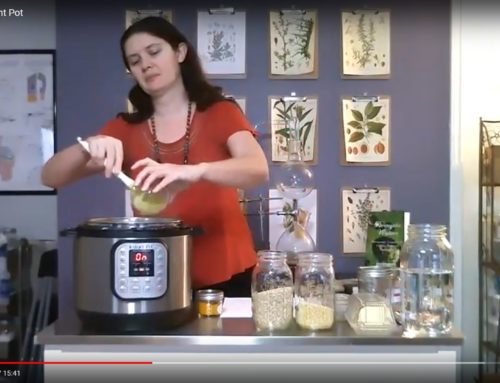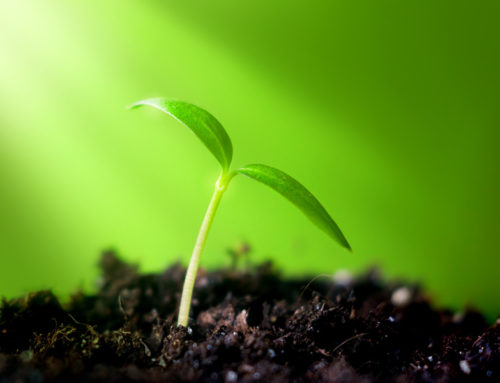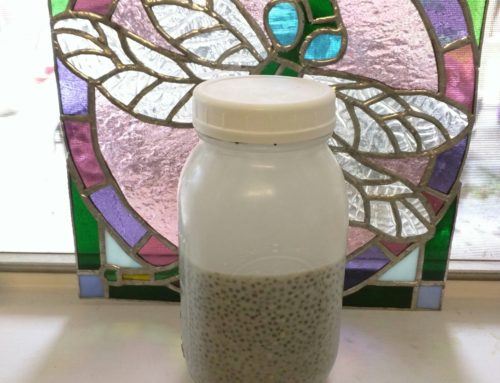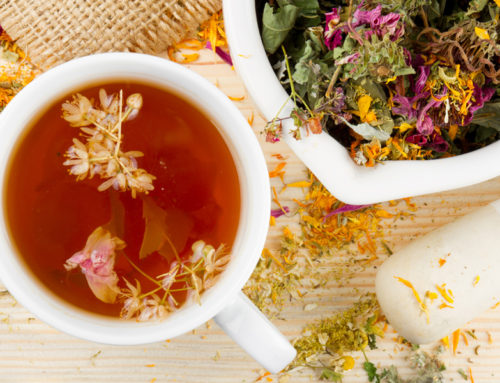Last Fall I enrolled in the East West School of Planetary Herbology to complete the herbal training I started a couple decades ago. My assignment for the lesson on Using Foods as Medicine was to use three (3) local herbs, from my garden or wildcrafted in my area, in my diet and to report on how I used them and what my experience was. This was a fun assignment so I thought I’d share my experiences and recipes here with you all!

Dandelion
Taraxacum officinale, or Dandelion, is considered a weed by many lawn-owners but this plant is a vitamin powerhouse and a useful herb for sluggish livers coming off a winter of rich, heavy foods. Dandelions are also one of the first sources of pollen for busy springtime bees and butterflies. My maternal grandmother, Maurine, taught me that if you hold a dandelion under the chin and your chin glows yellow it means you like butterscotch. Eleven year old me really did like butterscotch so grandma was right! I’d never eaten a dandelion until she showed us how to carefully pluck the florets, and to this day they still taste slightly of butterscotch to me. Some years later I collected dandelion flowers and made a dessert wine that I served at my wedding.
Lavender and Dandelion Flower Muffins
 One of my favorite ways to enjoy Texas’s springtime flower harvest is with a recipe for Lavender and Dandelion Flower Muffins that I found in Brittany Wood Nickerson’s 2017 The Herbalist’s Kitchen cookbook. I use spelt flour with cinnamon and cardamom from the spice cabinet, butter, eggs, milk, and honey. The recipe calls for 2 cups of loosely packed dandelion flower petals and 2 tablespoons of dried lavender flowers. I use fresh lavender flowers from the apothecary garden and up it to 3 tablespoons. I also added chopped walnuts. The recipe makes a dozen regular-sized muffins or about 30 mini muffins. I like to do a combination of large and mini muffins and then freeze them in batches so I can enjoy them with breakfast tea.
One of my favorite ways to enjoy Texas’s springtime flower harvest is with a recipe for Lavender and Dandelion Flower Muffins that I found in Brittany Wood Nickerson’s 2017 The Herbalist’s Kitchen cookbook. I use spelt flour with cinnamon and cardamom from the spice cabinet, butter, eggs, milk, and honey. The recipe calls for 2 cups of loosely packed dandelion flower petals and 2 tablespoons of dried lavender flowers. I use fresh lavender flowers from the apothecary garden and up it to 3 tablespoons. I also added chopped walnuts. The recipe makes a dozen regular-sized muffins or about 30 mini muffins. I like to do a combination of large and mini muffins and then freeze them in batches so I can enjoy them with breakfast tea.
Preheat oven to 400F (200C). Generously grease two muffin trays with 10-12 cups.
Combine flour, powder, soda, cinnamon, and salt in a bowl, whisking together until well combined.
Whisk together butter, eggs, milk, honey, and vanilla. Add to the dry ingredients, mixing just until combined. Add dandelion and lavender and nuts, stirring until just combined.
Fill the prepared muffin cups to the top with batter. Bake for 14-17 minutes or until a toothpick inserted in the center comes out clean.
Cleavers
Galium aparine is a really fun weed because it sticks to your clothes and you can make necklaces or ties for your friends and siblings. Ha! In Easley and Horne’s The Modern Herbal Dispensatory they note cleavers are indicated for use in stimulating the lymphatic system. I like to use cleavers in cases where we need to gently stimulate the waters of the body – stagnation showing up as edema in the legs and feet, or as part of a wellness plan during times of illness.
Tart Cherry Cleaver Oxymel
 For my class project on cleavers I made an oxymel, which is a honey-vinegar beverage. In her lovely book Wild Drinks and Cocktails Emily Han writes about oxymels, “The oxymel, which literally means “acid honey,” has been around since antiquity, when Hippocrates prescribed vinegar and honey syrup as an expectorant to ease wet, congested coughs and other ailments. Herbalists have kept the tradition alive throughout the ages, using vinegar and honey to extract, preserve, and administer the beneficial properties of herbs like bee balm, elderberries, garlic, rosemary, sage, and thyme. Depending on how potent an oxymel is, you could sip it neat, dilute it in a cup of hot water, or use it in a cocktail.”
For my class project on cleavers I made an oxymel, which is a honey-vinegar beverage. In her lovely book Wild Drinks and Cocktails Emily Han writes about oxymels, “The oxymel, which literally means “acid honey,” has been around since antiquity, when Hippocrates prescribed vinegar and honey syrup as an expectorant to ease wet, congested coughs and other ailments. Herbalists have kept the tradition alive throughout the ages, using vinegar and honey to extract, preserve, and administer the beneficial properties of herbs like bee balm, elderberries, garlic, rosemary, sage, and thyme. Depending on how potent an oxymel is, you could sip it neat, dilute it in a cup of hot water, or use it in a cocktail.”
I use Emily’s Blackberry and Thyme Oxymel as a template for my cleaver oxymels. Last year I used mixed berries, the year before Texas blackberries.
1-1/2 cups tart cherries (I used frozen)
1/2 cup chopped cleavers
1 cup apple cider vinegar
3/4 cup wildflower honey
I pour everything into a mason jar and cap with a plastic lid (the vinegar will react with the metal lids and turn them nasty real fast). I shake it up daily for two weeks then strain it out. Cleavers have a clean, green taste profile reminiscent of fresh oat grass. Combined with a tangy vinegar and fruit, then softened with some honey makes a perfectly lovely drink. I use about an ounce in the bottom of an old-fashioned glass and top with Topo Chico mineral water. Perfect after a morning spent in the garden!
Chickweed
Stellaria media is another spring green that grows plentifully in pockets of my front, side, and back gardens. I thought I was going to use Rosalee de la Forêt’s recipe for chickweed grilled cheese as my class project, which I’ve made before and is delicious!, but decided instead on a chimichurri.
 Chickweed Chimichurri
Chickweed Chimichurri
I used Chris Scheuer’s recipe for fresh herb chimichurri as a template.
1 Tbsp white balsamic vinegar
2 Tbsp lemon juice
1 tsp minced garlic
1 cup roughly chopped chickweed
1 cup parsley
1/2 cup mint leaves
1/2 cup extra virgin olive oil
1/2 tsp sea salt
1/4 tsp freshly ground black pepper
 All ingredients went into the smoothie cup that came with my blender. I pulsed until everything was combined and smooth. I had made some new potatoes and green beans with a bit of butter the day before and decided to use the chimichurri on top. I’d never tried adding chickweed to chimichurri before but I think the flavor is much improved by its addition. Chickweed tastes grassy like cleavers but isn’t as “clean” or “sharp” as the cleavers, more mellow-green with a saltiness to it that is pleasing.
All ingredients went into the smoothie cup that came with my blender. I pulsed until everything was combined and smooth. I had made some new potatoes and green beans with a bit of butter the day before and decided to use the chimichurri on top. I’d never tried adding chickweed to chimichurri before but I think the flavor is much improved by its addition. Chickweed tastes grassy like cleavers but isn’t as “clean” or “sharp” as the cleavers, more mellow-green with a saltiness to it that is pleasing.
I have leftover chimichurri sauce which I’ll be using with some Eye of the Goat heirloom beans and Louisiana purple rice similar to this recipe for the electric pressure cooker. The last time I tossed beans and rice with chimichurri it was sublime. I can’t wait to try this chickweed version.









Love this. We live in the country and I use our weeds ALL the time. Thanks for the article Amy.